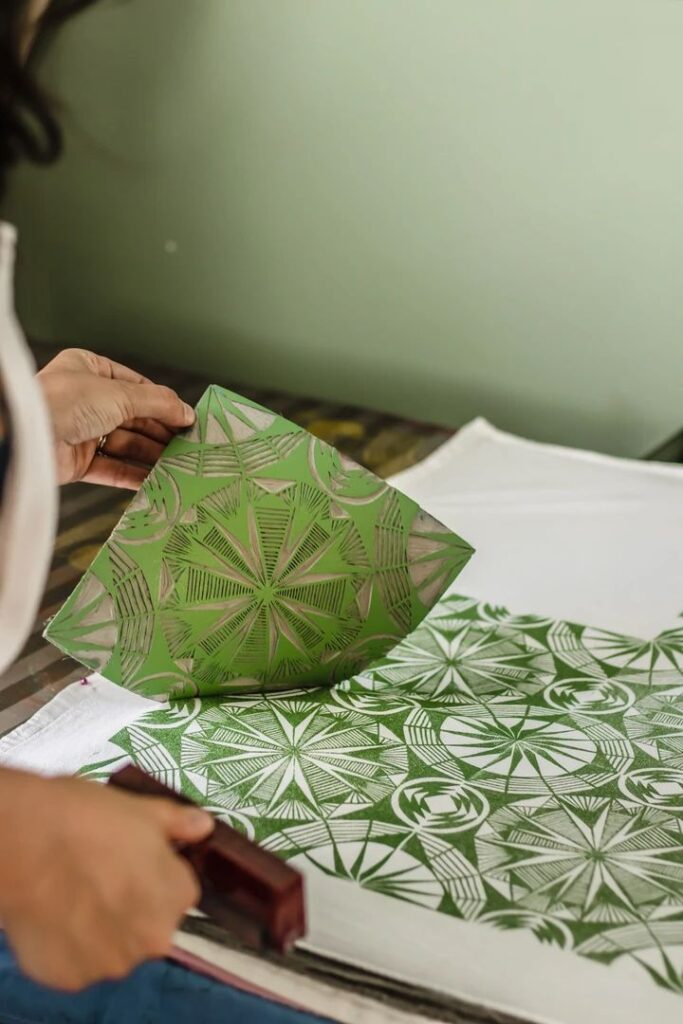
What is Linocut Printing? Techniques & Complete Printing Process.
Linocut printmaking is a captivating and versatile artistic process that has been embraced by artists for decades. This form of relief printing involves carving a design into a block of linoleum, inking the raised surface, and transferring the image onto paper or fabric. The process combines craftsmanship and creativity, resulting in unique and visually striking linocut prints.
History
Linocut printmaking emerged in the early 20th century as an accessible alternative to woodcut printing. Linoleum, a material made from solidified linseed oil, wood flour, and other natural ingredients, proved to be an excellent medium for carving due to its pliability and smooth surface. The transition from wood to linoleum simplified the carving process and expanded the possibilities for artists to experiment with intricate details.
There are several advantages of linocut printmaking which help artists carve and create beautiful linoleum cut prints.
Accessibility
The technique requires minimal equipment and is relatively inexpensive, making it an accessible medium for both novice and experienced artists.
Versatility
Artists can achieve a wide range of effects by experimenting with different inks, papers, and carving techniques. From bold and graphic designs to intricate details, linocut offers versatility in artistic expression.
Textures and Depth
The relief nature of this printing technique allows for the creation of prints with distinctive textures and depths. Artists can play with varying levels of ink application and pressure during printing to enhance these characteristics.

How to Make a Linocut
The process of making a lino print includes coming up with a design, carving it in a lino block and printing it with ink (not paint) on paper. These are posts that I’ve written over the years to break down the process of making a linocut. Start with the first resource below if you want an overview of the process.
Making a Lino Print Step-by-Step
Design Creation
Artists begin by sketching their designs onto the linoleum block. This can be a meticulous process, as the final print will be a reverse image of the carved block. The artist must consider the interplay of positive and negative space to achieve the desired visual effect.
Carving
Once the design is finalized, the artist uses carving linocut tools to carefully remove the linoleum from the areas that will not be inked. The raised portions of the block represent the image that will be transferred onto paper, while the carved areas remain blank.
Inking
The carved linoleum block is then inked using a roller. The roller ensures an even and consistent layer of ink on the raised surface. Artists can experiment with different colors and techniques to achieve various effects.
Printing
After inking, the linoleum block is pressed onto paper or fabric, transferring the inked design. Artists can print multiple copies from a single carved block, creating editions of their work. The pressure applied during printing plays a crucial role in determining the intensity of the final print.
Editioning
Artists often number and sign their prints to create limited editions, adding value and exclusivity to each piece. The editioning process ensures consistency across the prints while allowing for subtle variations that may arise during the hand-printing process.

Linocut Techniques
Linocut printmaking involves various techniques that artists can employ to create diverse and visually engaging linocut prints, Here’s a brief overview of some key techniques of printing.
Relief Carving
Relief carving is the primary technique in linocut printmaking. Artists use carving tools to remove linoleum from the areas they want to remain white, leaving the raised portions to be inked and printed.
Reduction
Reduction printing is a method where a single block linoleum is progressively carved and printed with multiple colors. After each color is printed, more of the block is carved away, reducing the surface available for the next color. This process requires careful planning and precision for accurate prints.
Multi-Block Printing
In multi-block printing, artists use separate blocks OF linoleum for each color, allowing for greater color variation and complexity in the final linocut print. Each block is carved to represent a specific color in the overall composition.
Blind Printing
Blind printing, also known as embossing, involves printing without ink. Instead, the pressure applied during printing creates an impression on the paper, emphasizing the tactile quality of the print.
Selective Inking
Selective inking involves applying ink to specific areas of the linoleum block rather than inking the entire surface. This technique allows artists to create emphasis, depth, and contrast within their designs.
Texture Creation
Artists can introduce texture to their prints by incorporating various tools or materials during the carving process. Different gouges, brushes, or even unconventional objects can be used to add unique textures to the final print.

These printmaking techniques offer a glimpse into the versatility and creative possibilities that linocut printmaking provides to artists, encouraging experimentation and innovation in this traditional art form.
In printmaking, the linoleum cut technique stands as a testament to the enduring appeal of traditional artistic techniques. Its blend of craftsmanship, creativity, and accessibility has ensured its continued popularity among artists seeking to bring their visions to life through the tactile and visually captivating medium of linocut prints.